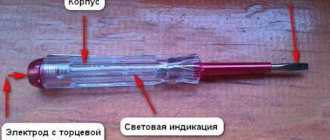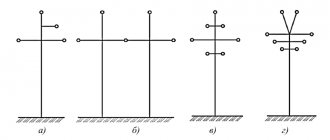The purpose of electrical safety training in the workplace
Before you start working at a company or other organization, you need to know how to carry out work safely. The danger of electric shock exists literally everywhere and it is unacceptable not to think about it when performing production tasks.
List of objectives:
- Familiarization of the newly arrived employee with the new workplace. The arriving worker cannot independently know about the dangers, so he must be instructed, including showing the equipment on which he will work.
- If an emergency occurs, you need to know what to do: how to provide first aid, where to evacuate, the procedure for reporting to management.
- What to do in the event of a fire, including where fire extinguishers and other fire extinguishing equipment are located.
After the briefing, it is necessary to interview the employee to find out whether he understood everything correctly and what his actions would be in the event of an electric shock or a high voltage hazard.
IMPACT OF ELECTRIC CURRENT ON THE HUMAN BODY
2.1. Electric current has biological, electrolytic and thermal effects on the human body. 2.2. Biological is expressed in irritation and excitation of living cells of the body, which leads to involuntary convulsive muscle contractions, disruption of the nervous system, respiratory and circulatory system. In this case, fainting, loss of consciousness, speech disorder, convulsions, and breathing problems (even stopping) may occur. In case of severe electrical injury, death can occur instantly. 2.3. Electrolytic effects manifest themselves in the decomposition of blood plasma and other organic liquids, which can lead to a disruption of their physical and chemical composition. 2.4. Thermal exposure is accompanied by burns of parts of the body and overheating of individual internal organs, causing various functional disorders in them. The resulting electric arc causes local damage to human tissues and organs. 2.5. According to the severity of electrical injuries, they are classified into four degrees: - I degree - convulsive muscle contraction without loss of consciousness; — II degree – convulsive muscle contraction and loss of consciousness; — III degree – loss of consciousness and dysfunction of cardiac activity and breathing; — IV degree – clinical death. 2.6. Burns are divided into four degrees: - I degree - redness of the skin; — II degree – formation of bubbles; — III degree – charring of the skin; — IV degree – charring of subcutaneous tissue, muscles, blood vessels, etc... 2.7. Types of electric shock: - electrical burns, divided into current (contact), arc and combined; - electrical marks (signs) - specific damage to the skin by electric current; - metallization of the skin - penetration into the upper layers of the skin of the smallest particles of metal (welding work), melted under the influence of an electric arc; - mechanical damage - a consequence of sharp involuntary convulsive contractions of muscles under the influence of current or a fall from a height when released from the action of electric current; — electroophthalmia – damage to the organs of vision (electric arc); — electric shock is a kind of severe neuroreflex reaction of the body, accompanied by serious disorders of blood circulation, breathing, and metabolism; - electric shock - stimulation of living tissues of the body by electric current, accompanied by involuntary convulsive muscle contractions. 2.8. The severity of electrical injuries depends on the strength of the current passing through a person, the type of current, the time of exposure, the physiological state of the body (individual properties) and environmental conditions. 2.9. Current strength. The overall reaction of the body depends on its magnitude. The maximum permissible value of alternating current is 0.3 mA. When the current strength increases to 0.6-1.6 mA, a person begins to feel its effect, and a slight trembling of the hands occurs. With a current strength of 8-10 mA, the muscles of the arm (in which the conductor is clamped) contract, and the person is unable to free himself from the action of the current. AC current values of 50-200 mA or more cause cardiac fibrillation, which can lead to cardiac arrest. 2.10. Type of current. The maximum permissible value of direct current is 3-4 times higher than the permissible value of alternating current, but this is at a voltage not higher than 260-300 V. At higher values, it is more dangerous for humans due to its electrolytic effects. 2.11. Resistance of the human body. The human body conducts electricity. Electrification occurs when there is a potential difference between two points in a given organism. It is important to emphasize that the danger of electrical accidents does not arise from simple contact with a live wire, but from simultaneous contact with a live wire and another object at a difference in potential. The resistance of the human body is made up of three components: the resistance of the skin (at contact points), internal organs and the capacity of the human skin. The main resistance value is the superficial skin (up to 0.2 mm thick). When the skin is moistened and damaged in places of contact with live parts, its resistance drops sharply. 2.12. The resistance of the skin decreases greatly with increasing density and area of contact with live parts. At a voltage of 200-300 V, an electrical breakthrough occurs in the upper layer of the skin. 2.13. Duration of current exposure. The severity of the injury depends on the duration of exposure to the electric current. The time it takes for the electrical current to pass is critical in determining the extent of injury. For example, marine fish (electric eel rays) produce extremely unpleasant discharges that can cause loss of consciousness. However, despite a voltage of 600 V, a current of 1 A and a resistance of approximately 600 ohms, these fish are not capable of causing a fatal shock because the duration of the discharge is too short - on the order of several tens of microseconds. 2.14. With prolonged exposure to electric current, skin resistance decreases (due to sweating) at the contact sites, increasing the likelihood of current passing during a particularly dangerous period of the cardiac cycle. A person can withstand a lethal alternating current of 100 mA if the duration of exposure does not exceed 0.5 s. 2.15. The path of electric current through the human body. It is most dangerous when the current passes through vital organs - the heart, lungs, brain. 2.16. When a person is injured, 6.7% of the total electric current passes through the “right arm - legs” path through the human heart. During the leg-to-leg path, only 0.4% of the total current passes through the human heart. 2.17. From a medical point of view, the passage of current through the body is the main traumatic factor. 2.18. Frequency of electric current. The frequency of electric current accepted in the energy industry (50 Hz) poses a great danger of convulsions and ventricular fibrillation. Fibrillation is not a muscular response but is caused by repetitive stimulation with a maximum sensitivity of 10 Hz. Therefore, alternating current (with a frequency of 50 Hz) is considered three to five times more dangerous than direct current - it affects human cardiac activity. 2.19. By individual characteristics of a person (or physiological state) we mean: diseases of the skin, cardiovascular system, lungs, nervous diseases and everything that increases the pace of the heart (fatigue, excitement, fear, alcohol, thirst) contributes to an increase in the severity of electric shock. 2.20. Environmental conditions and the premises themselves in which electrical installations are located are factors influencing the severity of electric shock. 2.21. Premises are divided into three categories: - premises without increased danger; — high-risk premises; - especially dangerous premises. 2.22. Premises with increased danger are characterized by the presence of at least one of the following conditions: - conductive dust, soot; — dampness – relative air humidity exceeds 75% for a long time; — high air temperature – exceeds 35°C for a long time; - conductive floor - metal, reinforced concrete, stone, earthen; - the ability to simultaneously touch metal elements of technological equipment connected to the ground or metal structures of a building and metal casings of equipment. 2.23. Particularly dangerous premises are characterized by the presence of: - high air humidity - close to 100%, “dripping from the ceiling”; — a chemically active environment that has a destructive effect on the insulation of electrical equipment; - simultaneous presence of two or more signs of premises with increased danger. 2.24. Premises without increased danger, i.e. in which all the above conditions are absent. 2.25. There is no category of safe premises where electrical installations are used. There is always a danger of electric shock in any premises! 2.26. Employees notify their immediate supervisor of any detected malfunctions. In this case, starting work is allowed after troubleshooting and only after receiving permission from the immediate supervisor.
Which employees should be interviewed?
Everyone, without exception, should have knowledge in the field of electrical safety, but at the same time it is necessary to carry out instructions:
- With employees who do not directly work with electrical receivers, that is, non-electrical personnel. This includes industrial cleaners, PC users, machine operators and others. That is, all persons who in their activities come into contact with devices operating on electric current.
- Electricians involved in the installation and repair of power equipment are required to know the structure of all devices and wiring diagrams. They undergo training according to a special program.
- Heads of departments, heads of sections and foremen must also undergo instructions given by their immediate supervisors.
Failure to provide instructions may result in negative consequences and penalties from supervisory authorities.
Possible consequences of non-compliance
Electrical safety is an integral part of occupational safety. Failure to comply with its requirements can be of 2 types: violation of established rules for handling equipment and lack of personnel training. This can also include improperly executed TB documents.
If accidents occur at work, the following are responsible for the consequences:
- the head of the institution - as the person responsible for everything that happens in this organization;
- employee responsible for TB (and ES);
- an employee who committed violations that led to an accident.
Incidents that resulted in human death, moral and material damage, environmental pollution, etc. are subject to investigation. Depending on the situation, it is carried out by labor safety inspectors, representatives of departments and supervisory authorities. If the investigation reveals an offense (crime), the materials are sent to court.
Procedure for conducting induction training on electrical safety
Enterprises establish a procedure for instructing:
- The department of the chief power engineer or the person responsible for the electrical facilities of the facility is developing a program according to which the event will be carried out. The document is agreed upon and approved by order.
- A responsible person or several persons (electrical safety commission) is appointed for the instructions. As a rule, this is a certified specialist in the field of electrical safety.
- The time of the event is set.
- A classroom is pre-equipped, equipped with a projector, posters and other aids for conducting classes.
- After the briefing, a note is made in a special journal, the form of which is approved by the administrative document.
STEP VOLTAGE
If a person stands on the surface of the earth in the zone of spreading electric current, then voltage will arise at the length of his step and electric current will pass through his body. The magnitude of this voltage, called step voltage, depends on the width of the step and the location of the person. The closer a person stands to the fault point, the greater the step voltage.
To avoid electric shock, a person should leave the step voltage zone in short steps, without lifting one leg from the other.
If you have protective equipment made of dielectric rubber (boots, galoshes), you can use them to escape the step voltage zone.
It is not allowed to jump out of the step tension zone on one leg.
If a person falls (on his hands), the magnitude of the step voltage increases significantly, and therefore the magnitude of the current that will pass through his body and vital organs - the heart, lungs, brain.
How to register for training
As noted earlier, a note indicating that the employee has been instructed to be entered in a special journal.
Contents of the column in the journal:
- the first column indicates the serial number;
- in the second column the full name and initials of the employee are written;
- in the third - position;
- in the next column there is space for the signature of the person being instructed;
- in the fifth column, the responsible person who conducted the instruction signs.
The journal requirements are as follows:
- The pages must be numbered and bound.
- On the last page the total number of sheets is indicated and the organization's stamp is placed.
- The start and end dates of the journal are written on the cover.
- Storage of the log is necessary for 5 years, unless a different period is provided for by local regulatory acts of the enterprise.
- When designing and filling out the journal, you must not make mistakes, blots, typos, and much more. This is a document that must be written in legible handwriting.
conclusions
Electrical safety instruction for group 1 is carried out by an authorized official according to a pre-developed training program.
The annual safety testing course consists of two parts: lecture material (theoretical part) and a practical demonstration by the instructor of the employee’s actions on the safe operation of electrical appliances.
The basis for conducting instructions is an order from the employer. The result of the training is an entry in the Log Book and the issuance of a certificate with the assignment of an ES group.
Frequency
Introductory training in electrical safety should be carried out after hiring employees, without exception. This is the first knowledge gained during employment.
Electrical safety poster for enterprise
After obtaining theoretical skills, the employee must undergo other types of instruction (see Table 1).
Table 1. Types of electrical safety training
| Type of instruction | Description |
| Primary | After employment, the employee must perform duties at the workplace. Before performing work, the employee must be familiarized with the workplace, including the electrical equipment located in the work area. In this regard, initial training is carried out. |
| Current | In terms of information content, this briefing is the same as the initial one. It must be carried out so that the employee does not forget about safe work practices. During a work shift, an employee is engaged in performing production tasks, but in the process of work he forgets about safety, and to avoid this, it is necessary to periodically remind about the correct operation of electrical equipment. As a rule, it is carried out once every six months, unless other dates are determined by local regulations. |
| Unscheduled | It is carried out when upgrading equipment, when purchasing modern equipment, as well as if changes are made to the technological process, safety instructions or new operating requirements are established. |
| Target | If an employee is sent to perform tasks under a work permit, then he must first be instructed. Instruction is provided in the direction in which the work is being carried out. |
FIRST AID FOR VICTIMS OF ELECTRIC SHOCK
6.1. Quick disconnection from the electric current is the first action to save the victim. 6.2. In case of electric shock, it is necessary to quickly release the victim from the action of the current - immediately turn off that part of the electrical installation that the victim touches. When it is not possible to switch off the electrical installation, other measures should be taken to free the victim, taking due care 6.3. To separate the victim from live parts or wires with voltages up to 1000 V, use a rope, stick, board or any other dry object that does not conduct electric current. You can pull the victim by the clothes (if they are dry and are falling away from the body), while avoiding touching surrounding metal objects and parts of the victim’s body that are not covered by clothing. 6.4. To insulate your hands, you should use dielectric gloves or wrap your hand in a scarf, put a cloth cap on it, pull the sleeve of a jacket or coat over your hand, and throw dry cloth over the victim 6.5. It is recommended to operate with one hand, the other should be behind your back 6.6. On a power transmission line, when it is impossible to quickly turn it off at power points, you can short-circuit the wires by throwing on them a flexible non-insulated wire of sufficient cross-section, grounded to a metal support, grounding descent, etc. For convenience, a weight is attached to the free end of the conductor. If the victim touches one wire, then it is enough to ground only one wire 6.7. Everything mentioned above applies to installations with voltages up to 1000 V. To separate the victim from live parts energized above 1000 V, dielectric boots, gloves and insulating rods designed for the appropriate voltage should be used. Such actions may only be carried out by trained personnel 6.8. After releasing the victim from the effects of electric current or atmospheric electricity (lightning strike), it is necessary to carry out a full volume of resuscitation. Provide the victim with complete rest, do not allow him to move or continue working, as the condition may worsen due to burns of internal organs and tissues as the electric current flows. The consequences of internal burns may appear within the first day or the next week. 6.9. In all cases of electric shock, you must call a doctor, regardless of the condition of the victim. 6.10. First aid measures depend on the state in which the victim is after he is released from the action of the current: 6.11. if the victim is conscious, but had previously fainted, or was in an unconscious state, but with stable breathing and pulse remaining, he should be laid on a bed of clothes, unbuttoned clothes that are restricting breathing, create a flow of fresh air, rub and warm the body, remove unnecessary people from the room and create complete peace until the doctor arrives; 6.12. if the victim is unconscious, then he should be given ammonia to sniff, his face should be sprayed with cold water, and when he regains consciousness, he should be given 15–20 drops of valerian tincture and hot tea; 6.13. if the victim breathes rarely and convulsively, but his pulse is palpable, it is necessary to immediately give him artificial respiration until smooth spontaneous breathing appears or until a doctor arrives; 6.14. If the victim has no breathing (determined by the rise of the chest) and no pulse, he cannot be considered dead, since the supply of oxygen in the body lasts 4–8 minutes, you must immediately begin artificial respiration and external (indirect) cardiac massage. 6.15. The victim should be transferred to another place only in cases where he or the person providing assistance continues to be in danger or when providing assistance on the spot is impossible. Rules for determining signs of clinical death 6.16. To conclude that clinical death has occurred in a motionless victim, it is enough to ensure the absence of consciousness and pulse in the carotid artery. 6.17. You should not waste time determining consciousness by waiting for answers to the questions: “Are you all right? Is it possible to start providing assistance? Pressure on the neck in the area of the carotid artery is a strong pain stimulus. 6.18. You should not waste time identifying signs of breathing. They are elusive, and identifying them with the help of cotton wool, a mirror, or observing the movement of the chest can waste an unreasonably large amount of time. Spontaneous breathing without a pulse in the carotid artery lasts no more than a minute, and inhaling artificial respiration to an adult cannot cause harm under any circumstances. If signs of clinical death are confirmed. 6.19. Quickly free the chest from clothing and strike the sternum. If it is ineffective, begin cardiopulmonary resuscitation. Rules for determining the pulse in the carotid artery. 6.20. Place four fingers on the victim's neck and make sure there is no pulse in the carotid artery. 6.21. The pulse should be determined for at least 10 seconds. Rules for freeing the chest from clothing for resuscitation. 6.22. Unbutton your shirt and free your chest. 6.23. Raise the jumper, sweater or turtleneck and move it towards the neck. 6.24. A tank top, T-shirt or any underwear made of thin fabric need not be removed. But before striking the sternum or performing chest compressions, you should make sure that there is no cross or pendant under the fabric. 6.25. Be sure to unfasten or loosen the waist belt. There are known cases when, during chest compressions, the liver was damaged by the edge of a hard belt. Rules for striking the sternum. 6.26. Make sure there is no pulse in the carotid artery. 6.27. Cover the xiphoid process with two fingers. 6.28. Strike with your fist above your fingers covering the xiphoid process. 6.29. After the impact, check the pulse in the carotid artery. If there is no pulse, make one or two more attempts. 6.30. Do not strike if there is a pulse in the carotid artery. 6.31. You cannot strike the xiphoid process. Attention! In the event of clinical death, especially after electric shock, the first thing to do is to strike the victim in the sternum. If the blow is struck within the first minute after cardiac arrest, then the probability of revival exceeds 50%. 6.32. If after several beats a pulse does not appear in the carotid artery, then proceed to chest compressions. Rules for performing chest compressions and ventilation-free resuscitation. 6.33. Place the base of the right palm above the xiphoid process so that the thumb is directed towards the chin or abdomen of the victim. Place your left palm on the palm of your right hand. 6.34. Move the center of gravity to the victim’s sternum and perform indirect cardiac massage with straight arms. 6.35. Push the chest at least 3-5 cm with a frequency of at least 60 times per minute. 6.36. Start each subsequent pressure only after the chest returns to its original position. 6.37. The optimal ratio of chest compressions and mechanical ventilation breaths is 30:2, regardless of the number of resuscitation participants. 6.38. If possible, apply cold to the head. Attention! With each pressure on the chest, an active exhalation occurs, and when it returns to its original position, a passive inhalation occurs. When discharge from the victim’s mouth poses a threat to the health of the rescuer, you can limit yourself to performing chest compressions, i.e. non-ventilation option for resuscitation. For indirect cardiac massage to be effective, it must be performed on a flat, hard surface. Rules for inhaling mechanical ventilation using the “mouth to mouth” method. 6.39. With your right hand, clasp the chin so that the fingers located on the victim’s lower jaw and cheeks can unclench and spread his lips. 6.40. Pinch your nose with your left hand. 6.41. Tilt the victim's head back and hold it in this position until the end of the inhalation. 6.42. Press your lips tightly against the victim’s lips and exhale as much as possible into him. If, during an inhalation of mechanical ventilation, the fingers of the right hand feel swelling of the cheeks, one can make an unmistakable conclusion that the attempt to inhale is ineffective. 6.43. If the first attempt to inhale mechanical ventilation was unsuccessful, you should increase the angle of head tilt and try again. 6.44. If the second attempt to inhale mechanical ventilation was unsuccessful, then it is necessary to apply 30 pressures on the sternum, turn the victim on his stomach, clean the oral cavity with his fingers, and only then inhale mechanical ventilation. Attention! There is no need to unclench the victim's jaws, since the teeth do not obstruct the passage of air. It is enough to open your lips only 6.45. First medical aid should be provided within the first four to five minutes after an electric shock. Using modern methods of resuscitation in the first two minutes after the onset of clinical death, up to 92% of victims can be saved, and within three to four minutes - only 50%. 6.46. In case of electric shock, the victim should in any case consult a doctor. After a few hours, dangerous consequences may occur (a drop in cardiac activity caused by impaired cardiac function due to exposure to electric current). Peripheral vascular abnormalities may be detected one week after injury. There have been cases where cataracts developed after several months.
Thanks to Timofey for providing the instructions! =)
What is the briefing for?
Introductory training in the field of electrical safety is necessary for:
- In order to explain to employees what technically complex equipment they will have to work on.
- Knowledge of specific production features.
- For preventive purposes, to avoid injury when handling power equipment.
- To ensure that there is no damage to the equipment.
- Knowledge in the field of working with electrical equipment.
- Gaining skills in working with technical devices in production.
All newly arrived employees, as well as experienced employees, must receive instructions from their immediate supervisors. If work is carried out with complex mechanisms, then this always poses a danger from burns to death, therefore, at the legislative level, all measures are provided to prevent these circumstances.
Preventive measures to prevent injury to employees are necessary.
n1.doc
7
- determine the class of a machine or tool from the passport;
- check the completeness and reliability of fastening of parts;
- verify by external inspection that the cable (cord), its protective tube and plug are in good condition, the integrity of the insulating parts of the housing, the handle and brush holder covers, and protective covers;
- check the operation of the switch;
- perform (if necessary) RCD testing;
- check the operation of the power tool or machine at idle speed;
- Check the serviceability of the grounding circuit on a class I machine.
It is not allowed to use hand-held electric machines, portable lamps and power tools, with related auxiliary equipment that have defects. When using power tools, hand-held electric machines, portable lamps, their wires and cables must be suspended whenever possible. The cable of the power tool must be protected from accidental mechanical damage and contact with hot, damp and oily surfaces. If any malfunctions are detected, work with hand-held electrical machines, portable power tools and lamps must be stopped immediately. To maintain good condition, carry out periodic tests and inspections of hand-held electrical machines, portable power tools and lamps, auxiliary equipment, by order of the head of the organization, a responsible employee with group III must be appointed. These portable electrical receivers must be subject to periodic inspections and tests within the time limits established by GOST 12.2.013-91, the technical specifications for them and the Rules for the operation of consumer electrical installations. Periodic inspections are not carried out less than once every 6 months and includes:
- visual inspection;
- check the idle speed for at least 5 minutes. At the same time, the clear operation of the switch is checked;
- measuring insulation resistance with a 500 V megohmmeter in the on state. The insulation resistance value must be at least 0.5 MOhm, and for class II machines - at least 2 MOhm;
- checking the integrity of the grounding circuit. To do this, use a device with a voltage of no more than 12 V, one of which is connected to the grounding contact of the connector (plug), and the other to a metal part of the product that is accessible to touch. The circuit is considered operational if the device shows the presence of current.
____________ _____________
7
Lectures Laboratory References Essays Questions Standards









